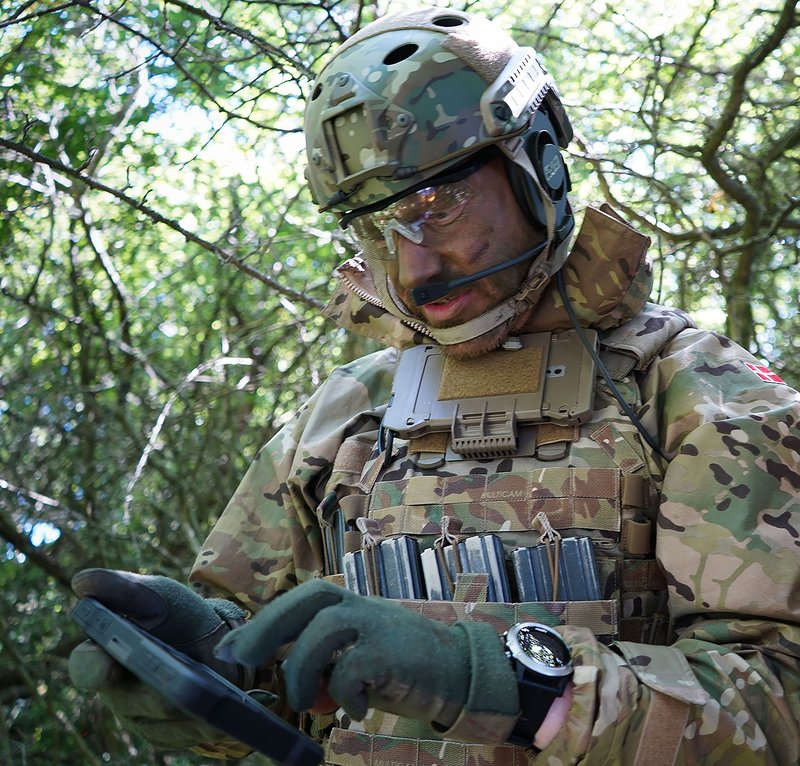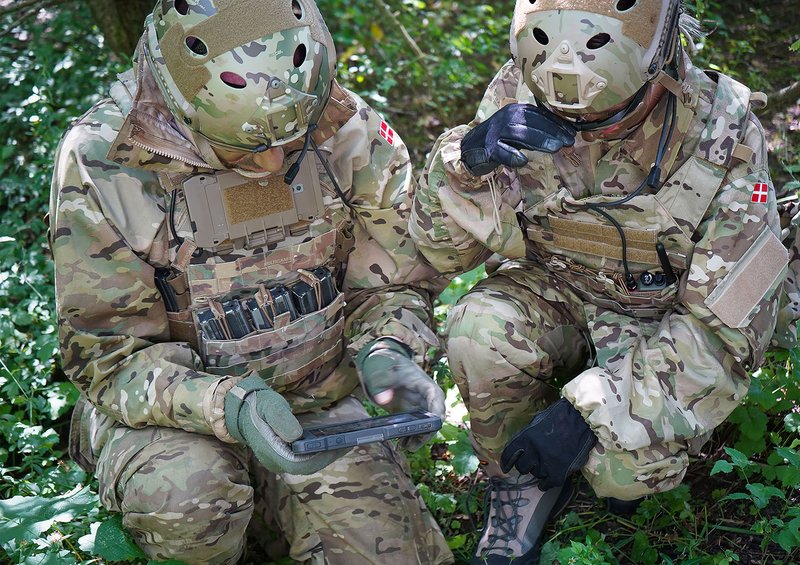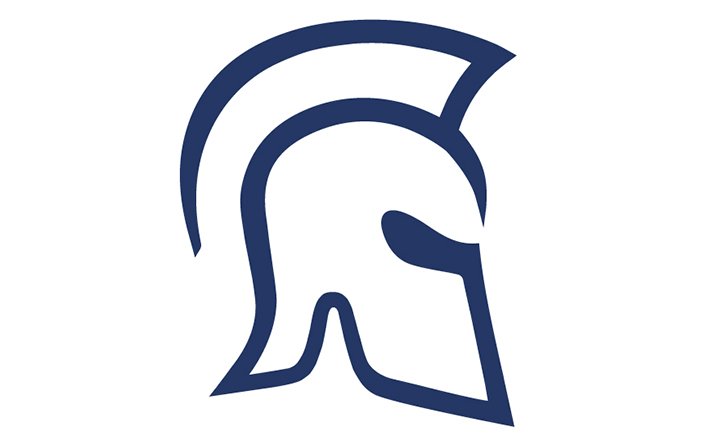Delivering advanced C4I at the tip of the spear (Sponsored)
This article is brought to you by Systematic
As the number of militaries around the world providing computing power to frontline troops increases, so does the complexity for delivering, integrating, and supporting this capability. The benefits of a digital capability are improved situational awareness and responsiveness, with increased intelligence helping to deliver mission success for all stakeholders.
However, in ensuring that a capability can be delivered, those working on fielding and procuring the technology need to keep some key factors in mind. These include an open architecture system to enable joint interoperability and the ready flow of data from sensors, as well as the long-term maintenance and support of the software once it is in place.
Soldiers equipped with SitaWare Edge can help to provide close-in intelligence generating capabilities that can be delivered across the C4ISR environment, while enjoying guaranteed interoperability and continuously improved technology.
Interoperability, modularity, and open architecture
The military operations of the past two decades have shown that there is a need to operate across flexible coalition networks. Additionally, the delivery of new equipment into service under urgent operational requirements (UORs) means that the integration of their capabilities into wider networks gains greater importance as soldiers and commanders seek to improve their battlefield situational awareness.
Sharing this intelligence allows for new plans to be created, modified, and shared across the network.— Systematic
Systematic’s SitaWare suite provides a fully integrated, vertical solution for effective command-and-control, allowing users at all levels to benefit from the situational picture generated by a wide range of sensor systems. The integration between products such as SitaWare Edge for dismounted troops, SitaWare Frontline for mounted units, and SitaWare Headquarters for headquarters staff means that new intelligence about an enemy can be easily generated, transferred, and updated from all users in the chain of command.
For dismounted troops, the ability to readily connect to a range of radio systems, receive video feeds from UAVs, use equipment such as laser designators, and interface easily with vehicles and other support elements helps to ensure that action in complex and contested environments can be achieved. Sharing this intelligence allows for new plans to be created, modified, and shared across the network.

Similarly, the SitaWare suite’s use of interoperability standards means that data can be shared with allies and partners across a coalition environment without any loss of functionality. For dismounted soldiers, the ability to ensure information can be shared across users that may be on different communications networks means that they can continue to operate effectively, secure in the knowledge that all friendly forces are able to share the same level of situational awareness.
Our software development kit (SDK) and support for key defence industry standards allows for equipment manufacturers and system integrators to readily interface with our software, helping to future-proof your C4ISR systems by allowing new technology to be easily added into your situational awareness software.
Software sustainment – the COTS advantage
The proliferation of mobile device technology has come with a corresponding explosion in the number of software developers and engineers working on mobile software platforms. As a result, the spread of software development has encouraged the creation of open-source software solutions, which can be worked on by registered, approved, or lone developers in their free time. While this does allow a more universal approach to the development of a platform, there are some significant risks that come with a platform that is open source when compared to a commercial off-the-shelf (COTS) such as SitaWare Edge.
SitaWare Edge continues to be developed and supported by a growing team of Systematic engineers with specialties and backgrounds from software and defence— Systematic
A key benefit of having a COTS product is that key elements of source code remain proprietary to the supplier, and thereby can be more secure. A COTS supplier has a key stake in ensuring that the cybersecurity of the proprietary code is maintained, and regular patching and fixing of vulnerabilities takes place. This is done alongside patching for stability and usability, so that all functions of the programme can be delivered as intended.

Being a product of a commercial business means that a COTS solution benefits from an organisation being financially invested in its success, which is best achieved through customer satisfaction, repeat business, and an expanding userbase. This customer base can also help drive demand in innovation which spurs capability advances, while also preserving backwards compatibility to ensure long lifecycles. SitaWare Edge continues to be developed and supported by a growing team of Systematic engineers with specialties and backgrounds from software and defence, as well as from customer use cases and experiences. This gives users of the SitaWare suite a greater security of supply in knowing the software will continue to be supported and patched, following Systematic’s principle of "leave no customer behind”.
Another benefit of a COTS platform over an open-source system is that it benefits from a corporatized approach to its development, through the application of roadmaps and structured development pathways. Features can be added to a product roadmap, prioritised, developed, and delivered using industry-approved practices such as agile and lean. Formalised processes such as these ensure that the delivery of new functions and features are properly project managed and risk reduced, and can also be inserted into a user’s system faster. Open source is more fragmentally supported, with developers potentially balancing multiple workloads and commitments, making long-term development and support less reliable.
More from Industry Spotlights
-
![Expanded focus – unleashing the potential of commercial SATCOM for defence]()
Expanded focus – unleashing the potential of commercial SATCOM for defence
In conversation... Intelsat's Ray Lindenmayer talks to Shephard's Gerrard Cowan about the new capabilities advanced commercial SATCOM technologies can provide for military customers, and how industry and government can best work together to achieve maximum effect in orbit.
-
![Enhancing education: How CAE is embracing new technology to boost military training]()
Enhancing education: How CAE is embracing new technology to boost military training
In Conversation... Shephard's Gerrard Cowan talks to CAE's Marc-Olivier Sabourin about how the training and simulation industry can help militaries achieve essential levels of readiness by leveraging new technology, innovative procurement methods and a truly collaborative approach.
-
![Why tactical UAVs are winning on the future battlefield (Podcast)]()
Why tactical UAVs are winning on the future battlefield (Podcast)
In Conversation: In this special edition of the Shephard Defence Podcast, Tony Skinner sits down with Dan Slasky, President and CEO of Aeronautics, to explore how cutting-edge tactical unmanned aerial systems are reshaping today’s battlefields.
-
![Fincantieri’s Vulcano Class: a new era of versatility and innovation in naval operations]()
Fincantieri’s Vulcano Class: a new era of versatility and innovation in naval operations
Logistic support ships (LSS) are essential for sustained naval operations, especially during extended deployments far from home ports.
-
![Need more flexibility in battle management system delivery?]()
Need more flexibility in battle management system delivery?
Systematic’s newest solution, SitaWare BattleCloud, brings greater flexibility to combat information systems and C4ISR.























